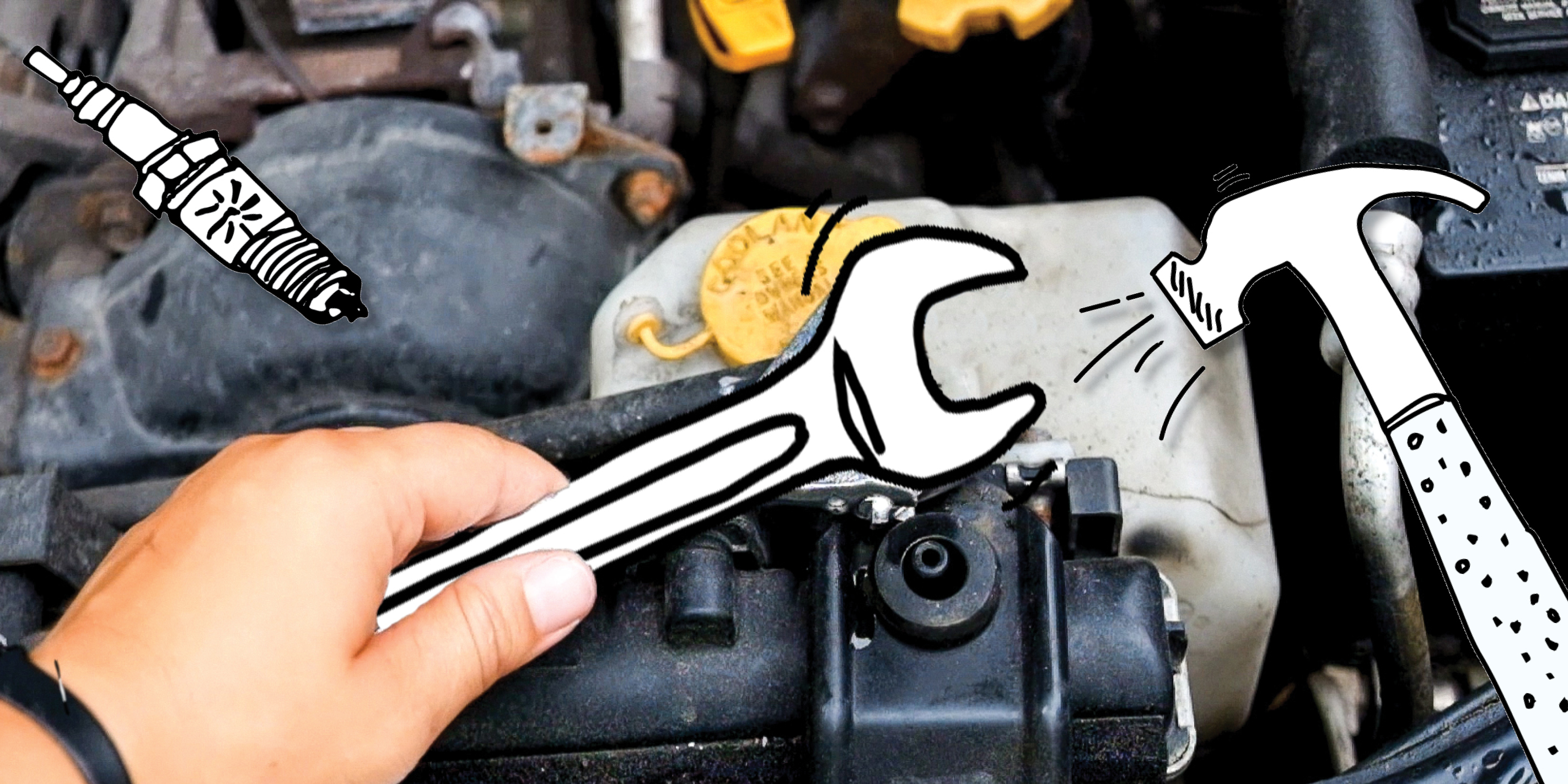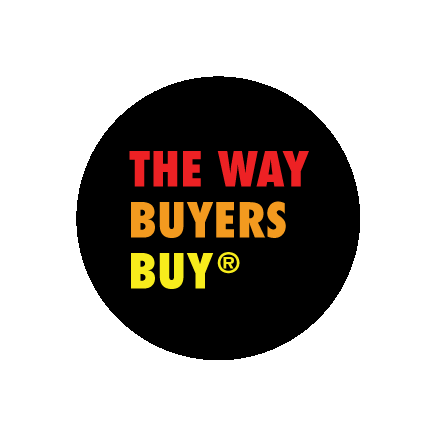Demo — The 8th Thing You Need to Accelerate Sales

Demos are an important tool, especially in high tech and SaaS marketing. But I see a lot of companies wasting their time, using demos the wrong way. Let’s change that.
Did you notice how LONG it took me to come back after the last blog post?
It was because I LOVE buying, but I HATE shopping. And I LOVE buyers that BUY and HATE Buyers that SHOP. So I was avoiding writing this post, which is about shopping.
Let me explain what I mean. The buying process is the whole process from a CHANGE, to the buyer determining how CRITICAL their problem is, to investigating their OPTIONS, to figuring out HOW risky it is to deal with you, to making the decision. The WHY? WHAT? HOW? in my sales process methodology, The Way Buyers Buy.
Shopping is that annoying little (not so little) bit in the middle where they go LOOKING AROUND at your competitors just to make sure they like you best. I LOVE customers who skip that step. But most don’t. And we have to be prepared for it.
That’s why I decided we HAVE to talk abut SHOPPING. And the part of SHOPPING we are going to talk about is...
Your DEMO.
I don’t much like the demo conversation, but it is one of the top tools you use to help your buyer shop. And from what I see every day working with my clients, there is so much that can be done to improve the usefulness and success of demos.
Big time.
This will take several conversations. And we’ll start today just with the WHY.
WHY you should BOTHER reading the next few posts about your demo.
(I’m guessing it may not be your favourite conversation either.)
I decided this summer to spend a SERIOUS amount of time creating a new workshop built around helping my clients tune up their demos.
I did it because this is what I saw:
2-hour demosWasting time demoing to the wrong buyerDemoing the wrong featuresNo sales process built into the demo
And what did all of that mean? Lower close rates. Often longer sales cycles, etc.
I’m going to give you 3 questions to think about. I hope they convince you to come shopping with me.
IS YOUR SALES PROCESS A DEMO? OR IS YOUR DEMO A TOOL IN YOUR SALES PROCESS?
That is the first thing I want to get straight.
I see so many companies starting with a very simple structure to their sales process:
ProspectDemoClose
And many of them would like to do that in one call.
Good.
Fine.
GREAT!
IF that matches the simplicity of your product or service and the simplicity of your buyer’s buying process.
And some salespeople do a good job at it.
But the RISK, the one I see in many companies, is when the demo REPLACES good sales process.
YOUR DEMO IS NOT YOUR SALES PROCESS.
It is not enough to land a canned demo in the lap of your prospect, hope the product will sell itself, and leave the decision with the buyer to buy.
You need to have sales process built around your demo.
Let me give you an example. I worked with a company 6 months ago that thought their demo was their sales process. Smart CEO, new sales rep, brilliantly simple product. So simple they thought it sold itself. After the demo they answered questions, sent a work order, and sat back and waited for the prospect to sign and return. Or not.
What was wrong with that, you say?
There were some specifics about the way their buyer buys that needed to be part of the sales process built around the demo.
First, they were often demoing to the wrong person. Someone who couldn’t buy.
Second, the reason that the real buyer would buy was an ROI reason, not a feature reason, and there was no discussion in the demo around ROI.
Third, there was no qualification in their demo and THE DEMO WAS THEIR SALES PROCESS. No questions asked. Happy to talk to anyone. Show the demo. Send the work order. And wait.
When we tweaked their demo and built SALES PROCESS around their demo, their win rate went to 100%.
Not bad.
So, the question I ask you is: do you have a DEMO? Or do you have a SALES PROCESS?
If you don’t have a SALES PROCESS and a GOOD DEMO as a tool within that sales process, keep listening.
ARE YOU USING YOUR DEMO TO CO-DRIVE?
Just saying. The whole reason we are in the car together on this road trip, anyway, is because I’m teaching you how to be a good co-driver in your sales process.
And are you using your demo to co-drive?
For companies with a simple 3-step sales process of “Prospect, Demo, Close,” the demo is your ONLY opportunity to co-drive.
And if you do NOT co-drive, you have lost predictability in your sales process.
For companies with a more complex sales process, the demo is still a REALLY REALLY IMPORTANT reason to co-drive.
Let me give you a before and after example.
One of my clients sells association management software. They’ve been in business for years, have a new SaaS version of their software, are in startup mode with that product, have good stuff to sell, and know good stuff. Great people and company, I would invest in them.
But they didn’t use their demo to co-drive.
Their buyer was used to buying custom, or at the very least, super-expensive software. And here my client comes along with a $149/month subscription option.
But the buyer was still in the $50,000 or $10,000 buying mode.
So what happened when they let their buyers drive the demo of their $149/month product with a $50,000 mindset?
The demos were 2 hours, my client received a list of 700 features to validate after the call, and the buyer sometimes went to RFP.
RFP? FOR A $149/month subscription-based product.
Wowzers. That will kill your business model.
So this is what we did. We incorporated a 5-slide presentation into the demo.
Those 5 slides said pretty much this, but way nicer. : )
"We’ve been in this business for a long time, and we have 100s of customers like you. We know what we are doing. You used to pay $50,000 or $10,000 for custom or off-the-shelf software. The world has changed. You can now get more than what you have today for $149/month. And it is so customizable, it is almost like custom. You might have to just tweak 5% of your current business process. Would that be worth it?”
What happened?
They reduced their demo from 2 HOURS to 35 MINUTES.
And their WIN RATE remained the same.
Detailed feature questions STOPPED.
And there were no more RFPs.
Well worth it.
Does any of that resonate with you and how your buyer shops?
IS YOUR DEMO STEERING YOUR BUYER TO THE RIGHT DESTINATION?
Last question for you to think about.
There seem to me to be 2 destinations or goals for demos.
To train.
Or ...
To sell.
The only right goal is the last one, to sell.
But the demo that trains thinks it sells and it looks something like this:
“When your users sign on to the portal they go to this page and create an account. I’ll put in the name John Smith and you will see that he can choose his communication preferences here, add a picture — just give me a second while I upload a picture I have here on my hard drive. There. Now that your user has created an account, they can modify their profile by adding their email address and a short bio. They can also organize their home page by clicking on this button and dragging and dropping the windows. For example, they can close this one using the X on the upper right hand corner of the box. And they can change the font and theme settings by clicking on File, Edit, Themes…"
Yikes.
The first thing I HAVE to say to let off steam (we do have the windows open and it is a nice crisp fall day with many coloured leaves and a 13°C high) is that font and colour are usually not the features that solve a business problem that is keeping a business buyer awake at 3:00 am.
Yet I am amazed at how often I see companies show demos that start with the user’s login screen and train instead of sell.
Sorry I have to bring it up. But it just happens too often and we HAVE to talk about it.
The demo that sells, on the other hand? Sounds like this.
“I understand that one of the key challenges you have is that you need to reduce the cost of your membership management and you have a mandate to increase the revenue you generate from branded products and events as well as maximizing renewals. Let me show you the dashboard that will give you, at a quick glance, the latest statistics on your membership, event, and product revenue. It will give you the data you need to make good decisions. Then I will take 5 minutes to show you our member management, event management, and online store modules so you can see how complete and yet how simple they are for your team to use every day …”
I really think that the fundamental difference between the two demos — to train or to sell — is really a question of WHO you are selling to.
Your buyer or driver is NOT the user.
You may have built much of the product with the user in mind because they are the ones who will be using it every day, but they are NOT the buyer.
Your DRIVER is the person with the business problem. The DESTINATION is to show them WHAT you can do for them.
Not HOW you will do it.
Make sense?
Do you think there is any chance that your demo is heading in the WRONG DIRECTION?
If there is just a teeny tiny mini chance, stick with me.
We’ll fix it.
BUT, enough about shopping!
I just put the windows up. Opened the sun roof. And grabbed a decaf coffee from the Ministry of Coffee. (Don’t need any fake adrenalin these days. Very busy! : ) *_*)
Heading off to walk around Pink Lake in the Laurentians. A tiny version of Alberta’s Lake Louise here in Eastern Canada. Beautiful green water. Red and yellow trees.
And a crunchy Golden Russet apple from the farmer’s market.
Coming?
See you in the next blog post. More shopping. I think we will stop at a car dealership ...
